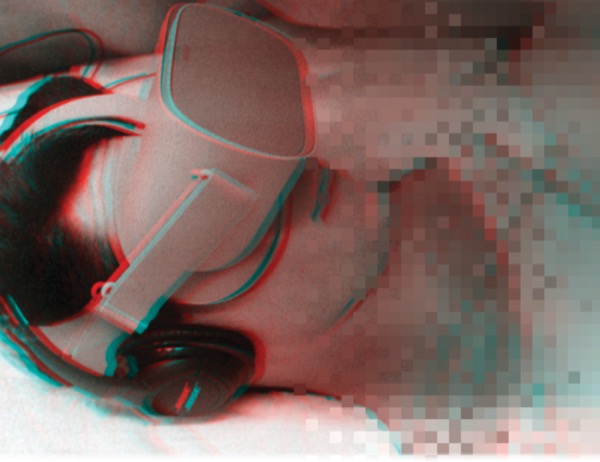Originally published by our sister publication Anesthesiology News
By Michael Vlessides
Las Vegas—Streaming an online movie, like via Netflix, through virtual reality goggles is feasible during total knee arthroplasty, according to results of a small case series.
Although the researchers encountered minor logistical challenges along the way, they noted that the approach holds promise for other institutions looking to provide their patients with a distractive technique during surgery.
“Anxiety is a common issue among patients coming in for surgery, and can impact patient satisfaction,” said Andrew Nguyen, MSH, a medical student at Virginia Commonwealth University School of Medicine, in Richmond. “Previous studies have shown that the use of music in the operating room can improve patient satisfaction, while also reducing anxiety and pain.
“Today, the use of virtual reality in combination with video streaming services such as Netflix, as well as immersive virtual reality games, have not been fully explored as a nonpharmacological modality to address anxiety,” he added.
To help bridge this gap, the researchers enrolled six adult patients into the case series, all of whom presented for primary total knee arthroplasty at the institution between February and May 2021. In the preoperative area, participants chose a movie from a list of preselected films.
Following this choice, a research investigator prepared a set of Oculus VR goggles to play the movie in the OR during the procedure. As part of these preparations, the investigator turned on the device, established a wireless internet connection, activated the Netflix app, adjusted the device to fit the patient’s head for comfort and adjusted the screen orientation to match participant’s field of view when lying supine.
To compare quantitative measures, the investigators also performed a retrospective chart review on 40 patients who had undergone the same operation by the same surgery group.
“To qualitatively assess the feasibility of our study, we measured both tolerability and acceptability,” Nguyen said. Tolerability was defined as participants able to wear the virtual reality goggles for at least 75% of the surgery. Acceptability, on the other hand, was measured using patient responses on 1 to 5 Likert scale, where scores greater than 3 were considered a positive response. Finally, the investigators measured total propofol use, time to first opioid request, and total 24-hour opioid use in both case-series patients and historical controls.
Presenting at the 2022 annual spring meeting of the American Society of Regional Anesthesia and Pain Medicine (abstract 2763), Nguyen reported that four patients (mean age, 65 years; two women) were able to complete the study. Among these, the VR goggles required between two and eight minutes to set up in the OR. The wireless connection, with 90.7-megabit download speed and 123.6-megabit upload speed, was adequate for the device to provide streaming.
With respect to tolerability, three in four participants tolerated the goggles for the entire procedure. Analyses of acceptability found that all 14 anesthesia providers (eight attending anesthesiologists, five CRNAs and one anesthesia resident) said they would “definitely” feel comfortable offering Netflix to a patient in the OR.
Patients were asked four questions about their comfort level and satisfaction with the VR movie experience. According to the 5-point Likert scale, the average score of the participants’ answers was 4.2, 4.6, 3.0 and 5.0.
“It’s notable that when we asked participants whether they would prefer music over a movie, three or four of the patients replied ‘maybe’ or ‘not sure,’” Nguyen said.
Although the researchers recognized that statistical analyses were futile, given the very small study cohort, quantitative outcome measures demonstrated significant benefits among the VR cohort. Indeed, the average amount of propofol used in the research participants was 85.6 mg, compared with 700 mg in the historical comparison group. Similarly, average 24-hour opioid consumption (reported in oral morphine equivalents [OME]) was 8.6 OME among patients in the VR group, markedly less than 23 OME consumed by the historical controls. However, the time to first opioid request was considerably shorter in the VR group (60.8 minutes) than in the comparison group (257 minutes).
The researchers were encouraged by the findings of the case series, which they said is the first of its kind to describe the use of Netflix during major surgery.
“Our study showed that virtual reality can possibly reduce perioperative sedation requirements and postoperative opioid consumption, despite requiring opioid analgesia earlier in comparison to the historical cohort,” Nguyen explained. “Similar study designs have shown the benefits and feasibility of using virtual reality during regional nerve blocks, knee arthroscopies, childbirth and pediatric operations.
“As such, we advocate the use of easily accessible technology to enhance the patient experience during major elective surgeries and reduce the need for pharmacological sedation,” he added.
“This was great preliminary work, and it would be great to have some objective assessment of how effective it is,” said session moderator Michael Barrington, MD, a professor of anesthesiology and perioperative medicine at Oregon Health & Science University, in Portland. “Can you make any comments about technical or logistical issues you may have encountered when setting it up and the impact that might have on the anesthesia providers and their other responsibilities?”
“We definitely had some issues with patient comfort,” Nguyen replied, “and there were unforeseen technical problems that popped up with the virtual reality goggles, such as random system updates where the movie stopped midway through and had to be restarted.”
Barrington asked whether the researchers have any plans to extend the work to a more formal investigation.
“We would like to,” Nguyen replied. “The original study was registered as a clinical trial [ClinicalTrials.gov Identifier: NCT04469881] by principal investigator Bryant Tran, MD, but the pandemic coronavirus restrictions impeded our ability to recruit patients. We would like to see it grow into a randomized controlled trial.”
Neither Barrington nor Nguyen reported any relevant financial disclosures.


